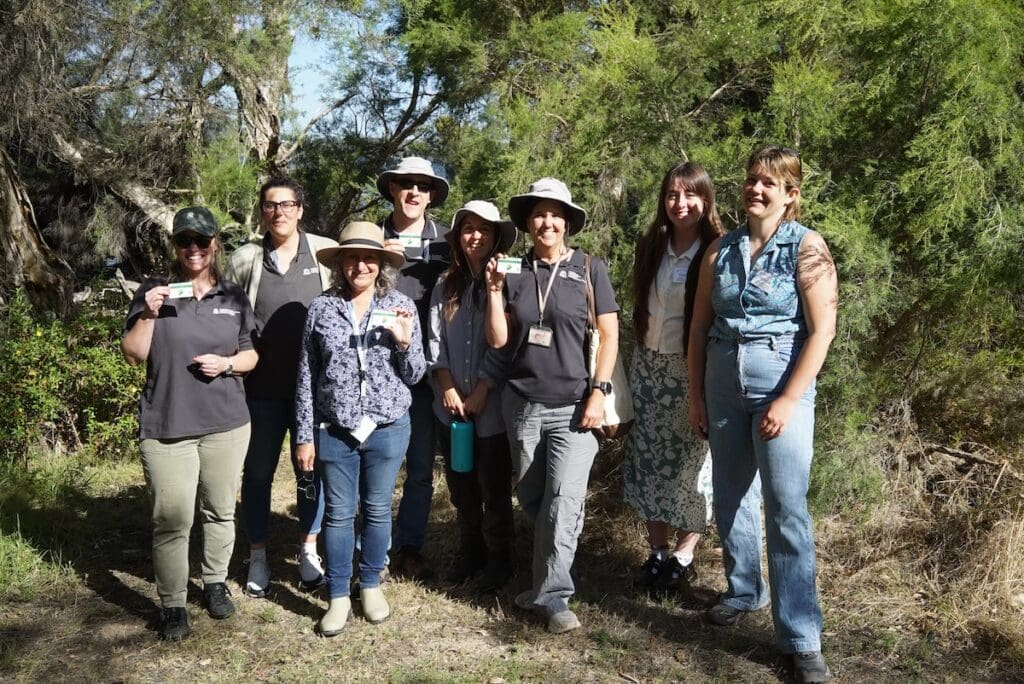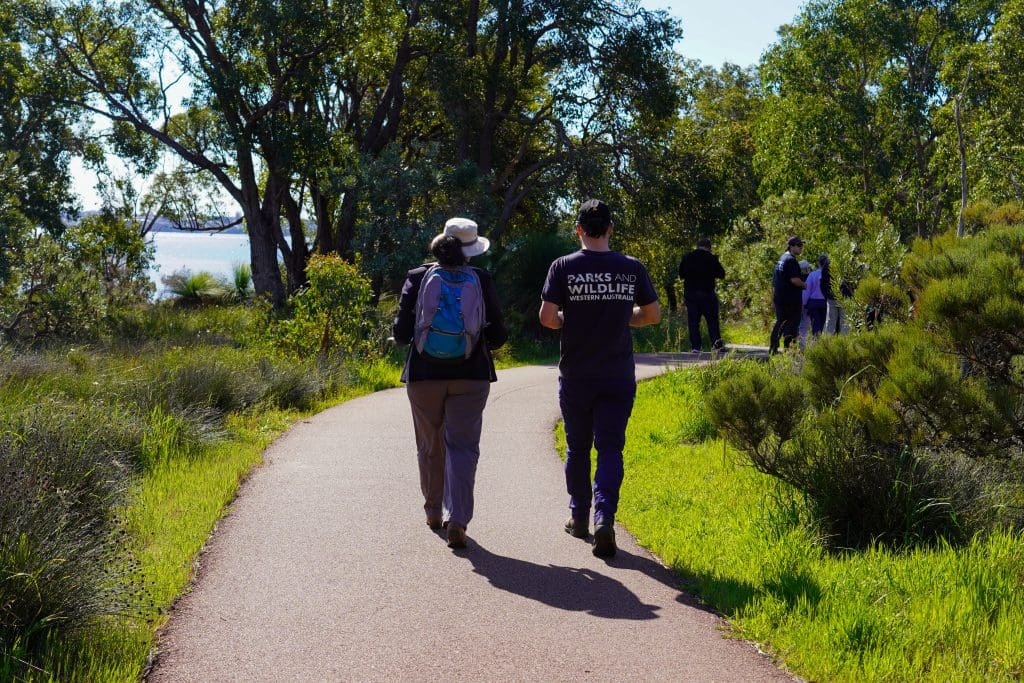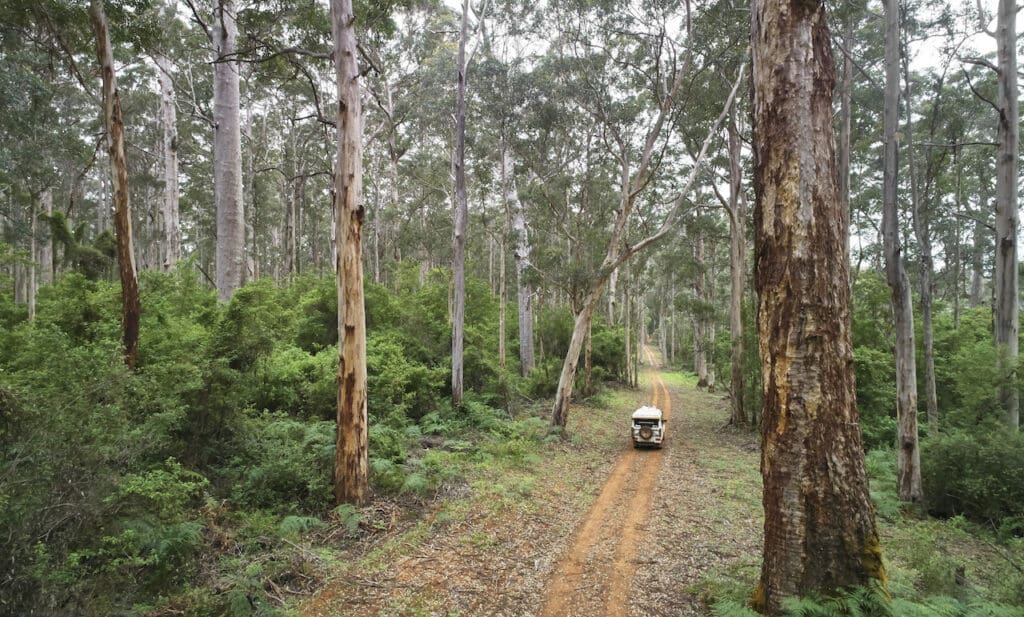Photo credit: Pemberton, Frances Andrijich
Speakers
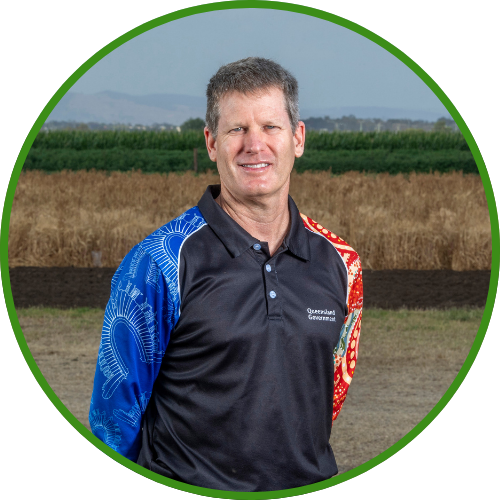
Dr geoff pegg
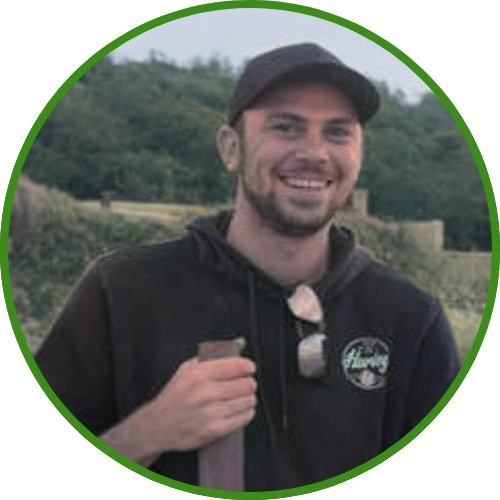
Aj Perkins
Dr Geoff Pegg and Aj Perkins – Keynote
Cultural Wisdom protecting forests and Country – Partnerships to protect country from forest biosecurity threats.
Exotic pests and pathogens threaten cultural and environmental values unique to Australia. The recent detection and subsequent spread of the invasive myrtle rust pathogen, Austropuccinia psidii, has highlighted the challenges associated with managing these exotic pests and pathogens. The detection of significant dieback in the ecologically and culturally significant bunya pines, grass trees, etc. associated with introduced Phytophthora species causing root disease is another emerging area of significant concern. These issues have exposed our limited understanding of the impacts on Country, culture and community and how Indigenous sciences and knowledge systems and cultural custodianship practices are largely missing in the environmental biosecurity space. Country is the centre of Culture for Indigenous people, which is ingrained through connection, story, knowledge, kinship, totemic systems, language, and Lore.
Building capacity in the forest health and biosecurity space requires technical experts and policy makers to walk together with First Nations people and develop an understanding of Culture and cultural custodianship practices to enable the appropriate implementation of strategies and tools. This project is about establishing an Environmental Biosecurity program and support network to improve the ability and capacity of Indigenous Rangers and other land managers across Australia to prepare for, detect and respond to plant pests and diseases threatening Australia’s forests.
BIO – Aj Perkins – Project Officer, Aboriginal Community Engagement within Department of Climate Change, Energy, the Environment and Water (DCCEEW) NSW.
Mr Perkins is a Gumbaynggirr man with strong connections to Aboriginal communities throughout northern NSW. Mr Perkins is part of the Ecosystems and Threatened Species unit of North-East Branch, DCCEEW. This team has carriage of the recovery program for threatened species in NSW under the Saving our Species program, working on a range of threatened flora and ecological communities including ones affected by myrtle rust and other plant pests and pathogens.
BIO – Dr Geoff Pegg – Senior Principal Forest Pathologist and Team Leader Forest Production and Protection with the Department of Agriculture & Fisheries, Queensland.
Prior to his current role, Dr Pegg worked as a Biosecurity officer with Australian Quarantine. Dr Pegg has more than 24 years’ experience as a forest pathologist working on a range of diseases impacting commercial forest species. For the last 14 years, following the arrival of Austropuccinia psidii (Myrtle rust), Dr Pegg has focussed his research towards the environmental space, studying the impacts of Myrtle rust on native Myrtaceae and associated ecosystems. Dr Pegg has been working in partnership with Indigenous groups to develop and deliver projects to address exotic pests that threaten the cultural and environmental biodiversity values unique to Australia. This includes Myrtle rust and the more recent decline of Bunya pines in the Bunya Mountains National Park.
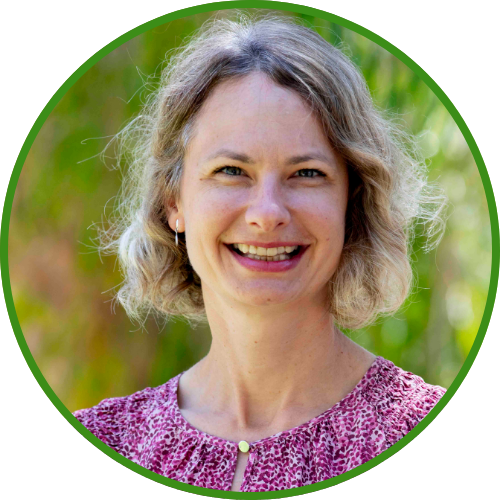
Melanie Davies
Urban Forest Program Facilitator, WA Local Government Association
Creating Resilient Urban Forests
We are at a critical junction for urban forests, with ongoing loss of canopy. Trees are vital to mitigate the impacts of climate change in urban areas, providing multiple environmental, social and economic benefits. WALGA has been leading advocacy work for over ten years to support Local Governments to retain and grow their urban forest. This presentation will outline the policy and on-ground greening programs to support Local Governments to create resilient, connected, expanded and equitable urban forests.
BIO
Melanie is responsible for delivering policy and projects to support Local Governments to retain and increase their urban forest. The role involves working with multiple stakeholders to ensure urban greening projects support liveability, urban heat reduction, resilience, biodiversity and water management. Melanie has over 20 years’ experience in sustainability and environmental management in Local Government, State Government and the private sector, both within Western Australia and Victoria. Melanie is passionate about urban greening and enjoys volunteering with bushcare groups and creating native verges.

Tom Mansfield
Murdoch University
Long-term ecosystem decline under Phytophthora cinnamomi
This talk highlights research on long-term impacts of Phytophthora cinnamomi to keystone forest trees. Historically, P. cinnamomi killed many jarrah, but not marri, in high rainfall periods; however, dryer conditions have lessened jarrah deaths. We studied tree population demographics in >60-year-old P. cinnamomi infestations. Our findings suggest that jarrah and, unexpectedly, marri are experiencing failed seedling recruitment within infested forest. The suggested decline of keystone trees has implications for long-term resilience of infested ecosystems.
BIO
Tom has recently achieved his PhD at Murdoch University where he studied how plant death from Phytophthora cinnamomi can cause cascading impacts to fauna and fungi. Tom is particularly interested in the ecological impacts caused by invasive plant pathogens and ways to counteract them to preserve ecosystem function.
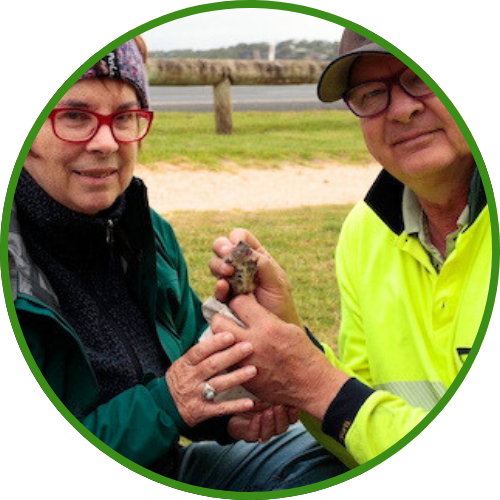
Barbara wilson and mark garkaklis
A Roadmap for National (APVMA) Registration of Phosphite for the Management of Phytophthora cinnamomi in Native Vegetation.
The National Registration of phosphite to allow for the management of Phytophthora dieback in native vegetation will remove an administrative burden to the states and improve the uptake of this management tool throughout Australia. This presentation summarises the extent of the risks to Australia’s biodiversity from Phytophthora dieback, considers the barriers to use of phosphite in controlling the disease and presents a way forward for eventual national registration of phosphite.
BIO – Mark Garkaklis, Hon. Professor, Harry Butler Institute, Murdoch University
Mark is an ecologist with significant experience in biodiversity management, climate change adaptation, ecological research, environmental monitoring, data analysis, scientific publishing and in leading teams in the management of Australia’s terrestrial and marine environment. He has worked in Phytophthora dieback management since 2001 and has ongoing contribution to research, supervision in conservation sciences and Environmental Impact Assessment throughout Australia.
BIO – Barbara Wilson, Hon. Associate Professor, Deakin University
Barbara is an internationally recognised conservation scientist with 40 years of experience in management and fundamental research of Australia’s flora, fauna, and terrestrial ecosystems, including state and commonwealth environmental policy and biodiversity conservation legislation development, environmental planning and management. Barbara has worked in Phytophthora dieback management in Victoria and Western Australia since the early 1990’s and she pioneered the aerial application of phosphite in the Otway Ranges.

Nigel Rowe
Senior Environment Officer – Main Roads WA
Dieback Free Gravel
Research and studies into using Metham Sodium to eliminate Phytophthora from gravel have been undertaken for almost two decades. Recently this work has ramped up to a commercial scale treating large quantities of gravel for use in road projects. This presentation summarises Main Roads’ approach to treating gravel with Metham Sodium and the management requirements of using this dieback free material on road projects.
BIO
Nigel began working as an Environment Officer with Main Roads in 2002. Initially his primary role was to manage the environmental approvals process for various road/bridge projects but he was always more interested in the revegetation works that were part of these projects. Nigel followed this interest and now specialises in the management of roadsides with regard to revegetation and vegetation management, including dieback.
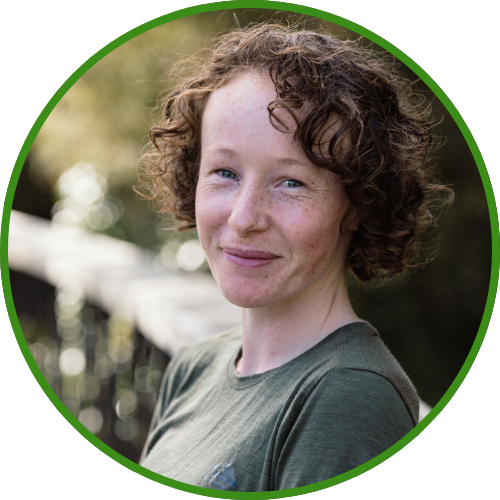
Shannon hunter
PhD Student, University of Auckland, Aotearoa – New Zealand
Phytophthora Communities Associated with Agathis australis (kauri) New Zealand and the Impact of Phosphite Treatments on Species Assemblages and Inoculum Abundance
This presentation will summarise two research papers from Shannon Hunters PhD project, one of which has been recently published and the other has been submitted to a journal. The Phytophthora community around kauri was explored using metabarcoding of environmental DNA (eDNA) and soil baiting in the context of kauri dieback disease expression and in response to a field phosphite-treatment.
BIO
Shannon Hunter is in the final stages of her PhD project (with the University of Auckland, New Zealand) and will be submitting her thesis in September 2024. Her PhD research has focused on the Phytophthora species assemblages in native kauri (Agathis australis) forests in the Northern regions of New Zealand. She is particularly interested in the effects of the treatment phosphite on the Phytophthora community and its impact on the inoculum abundance of the causal agent of kauri dieback (Phytophthora agathidicida).
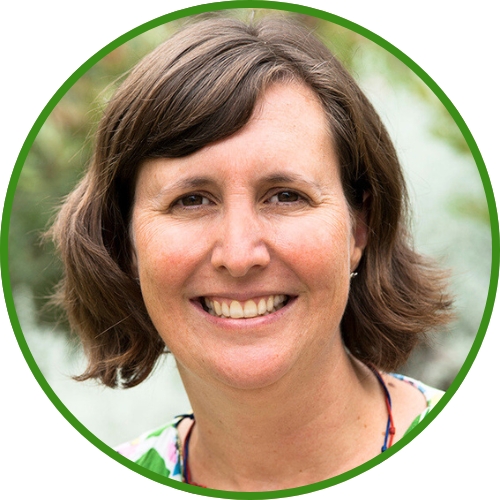
Anna Hopkins
Senior Lecturer – Edith Cowan University
A return to tertiary plant pathology teaching
There are few university-level courses that include a focus on plant pathology, despite a clear need for highly trained plant pathologists in industry. This presentation outlines two new plant pathology units that have been developed at Edith Cowan University. The units provide an overview of plant pathology principles and practices applicable in forestry, horticulture and agriculture. The presentation will also discuss the ways industry can contribute to these units.
BIO
Anna is a teaching and research academic in the School of Science at Edith Cowan University where she leads the Molecular Ecology and Evolution Group. Anna is also the academic chair for postgraduate Environmental Science coursework programmes at ECU. Anna has worked as a forest pathologist and molecular ecologist in Australia, New Zealand and Sweden. Her current research focusses on managing invasive forest pathogens, the impact of disturbance on the soil microbiome and the use of eDNA tools in conservation.

Kar-Chun Tan
Associate Professor – Curtin University
Dissecting the mode of action of phosphite in the dieback pathosystem
The oomycete pathogen Phytophthora cinnamomi causes dieback of native Australian flora and horticultural crops such as avocadoes. Dieback is very difficult to control as there is little natural genetic resistance to the disease and the pathogen has evolved resistance to chemical control. Kar-Chun will talk about how modern mass spectrometry technology was used to unravel the genomics and biochemistry of P. cinnamomi including shedding light on the multi-modal function of the oomycetide phosphite in controlling dieback and manipulation of plant metabolism.
BIO
Kar-Chun is classically trained as a molecular plant pathologist and currently served as a chief investigator at Curtin University since 2014. He has built capacity through successful linkages with the Australian cereal industry and biotech firms. He is interested in dissecting the molecular mechanism of phytopathogenicity as well as discovering novel ways to minimise the impact of plant diseases!

Nick wilkins
PhD candidate, Environmental Health, Flinders University. South Australia
A review of the current methods used to detect Phytophthora cinnamomi
In this presentation, Nicholas will discuss a flow chart I created for management to assess the sampling and processing of potential or infected P. cinnamomi sites. Reliable and time-efficient assessment of new or spreading infestations is vital for conservation efforts and to limit dieback. With plant species knowledge combined with the most effective sampling and processing techniques, the connection of management to fieldwork then lab work can improve the understanding of P. cinnamomi.
BIO
Nicholas is a PhD candidate in Environmental Health at Flinders University, his research is looking at the identification of symptomatic sites on Kangaroo Island to inform the government and landholders. His research has found that sites that were heavily burnt in a fire in 2019-20 are still positive for P. cinnamomi and that previously symptomatic sites are now identified as infected with P. cinnamomi, including a heavily used fire track. This means the movement of vehicles will be changed which will slow the spread of P. cinnamomi and management strategies will be advised.
Thank you to all our sponsors, we appreciate your support!
Major Sponsors


SPONSORS





